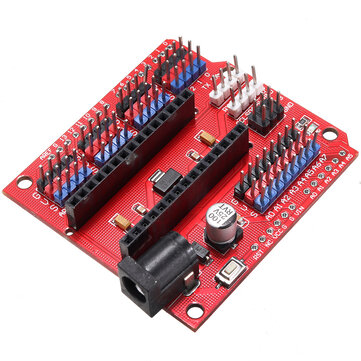Right I completely understand, my intention is to solve the problem of people building products to make it easier to build projects. Which is why I am building this. So I wanted to know if this really does solve the problem I intend to solve, so which is why I thought of posting it here.There are lot's of options out there, so it would depend if yours did something I wanted that others didn't, and if it was competitively priced. However, I've never bought any such boards - I would usually simply design my own - but I've not used a Nano, but do use Pro Mini's. In fact I've just had boards come from China last week using Pro Mini's for converting my cordless tools battery chargers to Li-Ion - with the board designed to replace the existing one in the chargers. I based on a design I found, and was going to port it to a PIC - but then thought "what's the point", as there's plenty of board space available.
Edit:
Here's an example, only £2.51

Multi-Function Funduino Nano Shield Nano Sensor Expansion Board Geekcreit for Arduino - products that work with official Arduino boards
Only US$3.99, buy best This nano shield lead out all digital IO port and analog IO port, each one with standard positive and negative power interface. Lead out the I2C interface of mainboard for convenient connection. sale online store at wholesale price.www.banggood.com
But this board is just to connect other peripherals with a wire, but for example, someone might need to solder their Accelerometer and Gyroscope to a fixed surface, then my board has the provision to do so, which isn't on the one you suggested. It is for the user to have a common board to house all their sensors and easily wire other peripherals.

